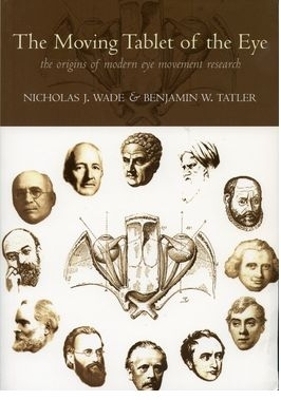
The Moving Tablet of the Eye
Oxford University Press (Verlag)
978-0-19-856617-5 (ISBN)
Eye movements are a vital part of our interaction with the world. They play a pivotal role in perception, cognition, and education. Research in this field is now proceeding at a considerable pace and casting new light on how the eyes move and what information we can derive during the frequent and brief periods of fixation. However, the origins of this work are less well known, even though much of our knowledge was derived from this research with far more primitive equipment.
This book is unique in tracing the history of eye movement research. It shows how great strides were made in this area before modern recording devices were available, especially in the measurement of nystagmus. When photographic techniques were adapted to measure discontinuous eye movements, from about 1900, many of the issues that are now basic to modern research were then investigated. One of the earliest cognitive tasks examined was reading, and it remains in the vanguard of contemporary research.
Modern researchers in this field will be astonished at the subtleties of these early experimental studies and the ingenuity of interpretations that were advanced one and even two centuries ago. Though physicians often carried out the original eye movement research, later on it was pursued by psychologists - it is within contemporary neuroscience that we find these two strands reunited.
Anyone interested in the origins of psychology and neuroscience will find much to stimulate and surprise them in this valuable new work.
Nick Wade is a Fellow of the Royal Society of Edinburgh
1. Informing contemporary research ; 1.1 Introduction ; 1.2 Scanning the way the eyes move ; 1.3 Modern eye movement measuring techniques ; 1.4 The moving tablet of the eye ; 2. Origins of eye movement research ; 2.1 Introduction ; 2.2 Binocular eye movements ; 2.3 Oculomotor anatomy and physiology ; 2.4 Internal motions of the eye ; 2.5 External motions of the eye ; 2.6 Afterimages ; 2.7 William Charles Wells ; 2.8 Erasmus Darwin's 'Zoonomia' ; 3. Nystagmus ; 3.1 Introduction ; 3.2 Visual vertigo ; 3.3 Wells on vertigo ; 3.4 Darwin on vertigo ; 3.5 Wells and Darwin ; 3.6 Purkinje and Flourens ; 3.7 Mach, Breuer and Crum Brown ; 3.8 James and Barany ; 3.9 Griffith and Dodge ; 4. Saccades and fixations ; 4.1 Introduction ; 4.2 Fixations ; 4.3 Saccades ; 4.4 Did Javal discover saccades? ; 4.5 Developments from Dodge ; 5. Visual motion illusions and eye movements ; 5.1 Introduction ; 5.2 Induced motion ; 5.3 Motion aftereffect ; 5.4 Visual vertigo ; 5.5 Autokinetic motion ; 5.6 Stroboscopic motion ; 5.7 Vection ; 5.8 Eye movements and visual motion ; 6. Perceptual stability and eye movements ; 6.1 Introduction ; 6.2 Stability during eye movements ; 6.3 Stability and saccades ; 6.4 Stability and fixation ; 7. Summary and conclusions ; 7.1 Introduction ; 7.2 Emergence of methods for measuring eye movements ; 7.3 Eye movement and eye position ; 7.4 Normal and abnormal eye movements ; 7.5 Sleep and wakefulness ; 7.6 Developmental trends ; 7.7 Perceptual and cognitive processes ; 7.8 Moving tablets - literature on eye movements
| Erscheint lt. Verlag | 30.6.2005 |
|---|---|
| Zusatzinfo | numerous halftones and b/w line |
| Verlagsort | Oxford |
| Sprache | englisch |
| Maße | 168 x 240 mm |
| Gewicht | 548 g |
| Themenwelt | Geisteswissenschaften ► Psychologie ► Allgemeine Psychologie |
| Geisteswissenschaften ► Psychologie ► Biopsychologie / Neurowissenschaften | |
| Geisteswissenschaften ► Psychologie ► Test in der Psychologie | |
| Medizin / Pharmazie ► Medizinische Fachgebiete ► Neurologie | |
| Naturwissenschaften ► Biologie ► Humanbiologie | |
| Naturwissenschaften ► Biologie ► Zoologie | |
| ISBN-10 | 0-19-856617-4 / 0198566174 |
| ISBN-13 | 978-0-19-856617-5 / 9780198566175 |
| Zustand | Neuware |
| Haben Sie eine Frage zum Produkt? |
aus dem Bereich


